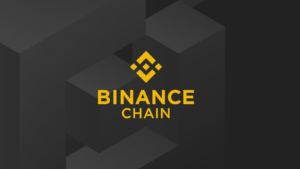The cryptocurrency market is expanding rapidly in Europe, and choosing the right exchange is crucial for traders and investors. Binance and Kraken are two of the most popular platforms available, both offering a wide range of services and features. However, they cater to slightly different needs, particularly when it comes to regulations, security, fees, and available assets. In this article, we will compare Binance and Kraken to help you determine which platform is more reliable for trading in Europe.
Overview of Binance and Kraken
Binance is the world’s largest cryptocurrency exchange by trading volume. Founded in 2017, it offers a comprehensive ecosystem that includes spot trading, futures, staking, lending, and various DeFi services. Binance has attracted millions of users globally due to its extensive list of trading pairs and advanced features. However, its regulatory status has been a topic of discussion in several regions, including Europe.
Kraken, founded in 2011, is one of the oldest cryptocurrency exchanges and has established a reputation for compliance and security. Headquartered in the United States, Kraken operates under strict regulatory guidelines, particularly in Europe. The platform is registered with various European financial authorities and complies with local laws, making it a trusted choice for traders concerned about regulation and security.
Both platforms have strengths, but their different approaches to compliance and user experience can significantly impact your trading experience.
Regulatory Compliance and Security
One of the most critical factors for European traders is regulatory compliance. Binance has faced regulatory challenges in several countries, including the UK, Germany, and the Netherlands. While Binance has taken steps to improve compliance, such as implementing stricter Know Your Customer (KYC) requirements and seeking licenses in various jurisdictions, its regulatory status can still create uncertainty for users in Europe.
Kraken, on the other hand, has a strong reputation for adhering to regulations. It is registered with multiple European financial regulators and complies with anti-money laundering (AML) and data protection laws. This commitment to regulatory compliance gives Kraken an edge in terms of reliability for traders who prioritize legal certainty and security.
When it comes to security, both platforms implement robust measures. Binance offers two-factor authentication (2FA), anti-phishing protection, and a Secure Asset Fund for Users (SAFU) to compensate users in case of security breaches. Kraken also employs 2FA, encrypted data storage, and cold wallet storage for most user funds. Additionally, Kraken has never experienced a major hack, further reinforcing its reputation for security.
If regulatory clarity and compliance are top priorities for you, Kraken may be the more reliable choice in Europe. However, Binance’s ongoing efforts to improve its regulatory standing should not be overlooked.
Trading Products and Features
Binance is known for its extensive range of trading products. It supports spot trading, futures contracts, staking, margin trading, and a variety of decentralized finance (DeFi) products. Binance offers over 600 trading pairs, making it an attractive option for traders looking to diversify their portfolios. Additionally, Binance provides high leverage on futures contracts, advanced trading tools, and features like Binance Launchpad for investing in new projects.
Kraken also offers a solid range of products, including spot trading, futures, staking, and margin trading. However, its product offering is more focused on long-term investors and institutional traders. Kraken supports fewer trading pairs compared to Binance, but it emphasizes high liquidity and stability in its core markets. Kraken Futures offers leverage of up to 50x, which is lower than Binance’s 125x but may appeal to traders seeking more conservative risk management.
For traders who want access to a wide variety of assets and advanced trading features, Binance has the advantage. However, if you prefer a more straightforward and regulated trading experience, Kraken’s offerings may better suit your needs.
Fees and Costs
Trading fees can significantly impact your profitability, especially if you are an active trader. Binance is known for its low trading fees, with a standard maker fee of 0.10% and a taker fee of 0.10% on spot trades. These fees can be further reduced by holding Binance Coin (BNB) and using it to pay for transaction fees, which provides a discount of up to 25%.
Kraken’s fee structure is slightly higher. Spot trading fees start at 0.16% for makers and 0.26% for takers, although these fees decrease based on your 30-day trading volume. While Kraken does not offer token-based fee discounts, it provides volume-based discounts for high-frequency traders. For European users, Kraken also supports euro deposits and withdrawals via SEPA, making it convenient and cost-effective for fiat transactions.
Binance’s lower fees and fee discount system make it more appealing for active traders. However, Kraken’s transparent fee structure and support for fiat transactions in Europe offer significant convenience for users prioritizing regulatory compliance.
User Experience and Interface
Binance offers a feature-rich trading experience, which can be both an advantage and a challenge for new users. The platform provides customizable charts, advanced order types, and integration with various financial services. While experienced traders may appreciate the wide range of tools, beginners might find the interface overwhelming.
Kraken takes a more user-friendly approach, with a clean and intuitive interface designed to accommodate both beginners and experienced traders. The platform offers a simplified trading view for newcomers and an advanced trading interface with detailed charts and order options for professionals. Kraken’s mobile app is also highly rated for its ease of use and functionality.
If you are new to cryptocurrency trading, Kraken’s user-friendly design may offer a smoother onboarding experience. On the other hand, Binance’s extensive features are ideal for advanced traders seeking maximum control over their trades.
Customer Support and Accessibility
Customer support is essential for resolving issues quickly, particularly during periods of high market volatility. Binance offers 24/7 live chat support and an extensive help center with tutorials and FAQs. However, some users have reported delays in response times during peak trading periods.
Kraken is known for its responsive customer support. The platform offers 24/7 live chat, email support, and detailed documentation to help users navigate the platform. Kraken’s reputation for strong customer service gives it an edge for traders who prioritize timely assistance.
Both platforms provide multilingual support, but Kraken’s consistent customer service quality may be more reliable for European users.
Conclusion
Choosing between Binance and Kraken ultimately depends on your trading priorities. Binance is a powerful platform that excels in offering a wide variety of assets, low fees, and advanced features. It is well-suited for experienced traders looking for diversification and high-volume trading opportunities. However, its regulatory challenges in Europe may raise concerns for some users.
Kraken, on the other hand, is a trusted and regulated platform with a strong focus on security and compliance. It provides a straightforward trading experience, making it ideal for users who prioritize legal certainty and stability. Although its fees are slightly higher, Kraken’s transparency and customer support make it a reliable choice for traders in Europe.
Both platforms have their strengths and weaknesses. Evaluate your needs carefully to determine which exchange aligns best with your trading goals. Happy trading!
